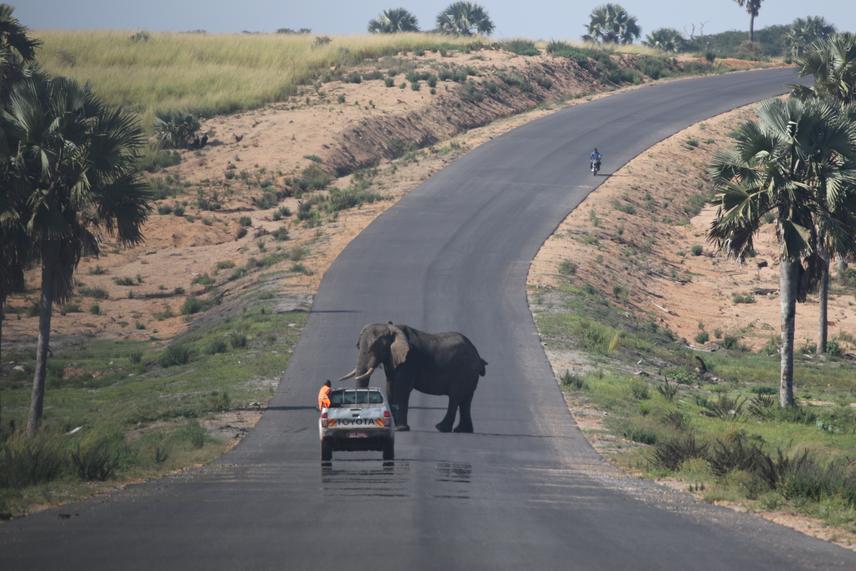Rodney Naleba
Oil mining and touristic activities in Murchison Falls National Park (MFNP) in Uganda have been associated with the construction and/or upgrading of already existing roads. This has dire consequences for the conservation and management of mammals in the area. Negative impacts of roads on mammals include habitat fragmentation and barrier effects which lead to the creation of small and isolated mammal populations, thus threatening population viability. Also, direct collisions between mammals and vehicles have been observed to be common in MFNP.

Elephant crossing road in Murchison Falls Park, Uganda. © William Luwaga.
Less attention has been paid to mitigating the negative consequences of roads on mammals during their planning and construction. Additionally, a few studies have been conducted on road ecology in Africa, while Uganda has no study that comprehensively focuses on the impacts of roads on mammals.
Consequently, this study seeks to fill this gap by investigating the impacts that roads and traffic pose on mammals in the Murchison Falls conservation area. This will be achieved by using a range of methods, including observation during road surveys to determine the mammals that use areas close to roads, their tolerance to roads, flight behaviours towards roads, responses to traffic volume and road type, amongst other aspects.
Moreover, this project also has a conservation education component which will involve engaging high school learners in schools neighbouring MFNP on the impact of human activities and development and infrastructure (especially roads) on mammal conservation and management. The aim is to raise an environmentally aware generation of young citizens who understand, appreciate, and care about their environment and other species.
Furthermore, outcomes from the project are expected to inform road planning and design in Uganda's conservation areas and beyond. We argue that road construction in Uganda's conservation areas should incorporate road ecology principles to lessen negative impacts on mammals and other species. This will ensure the persistence of mammals in increasingly human-modified landscapes in Uganda.